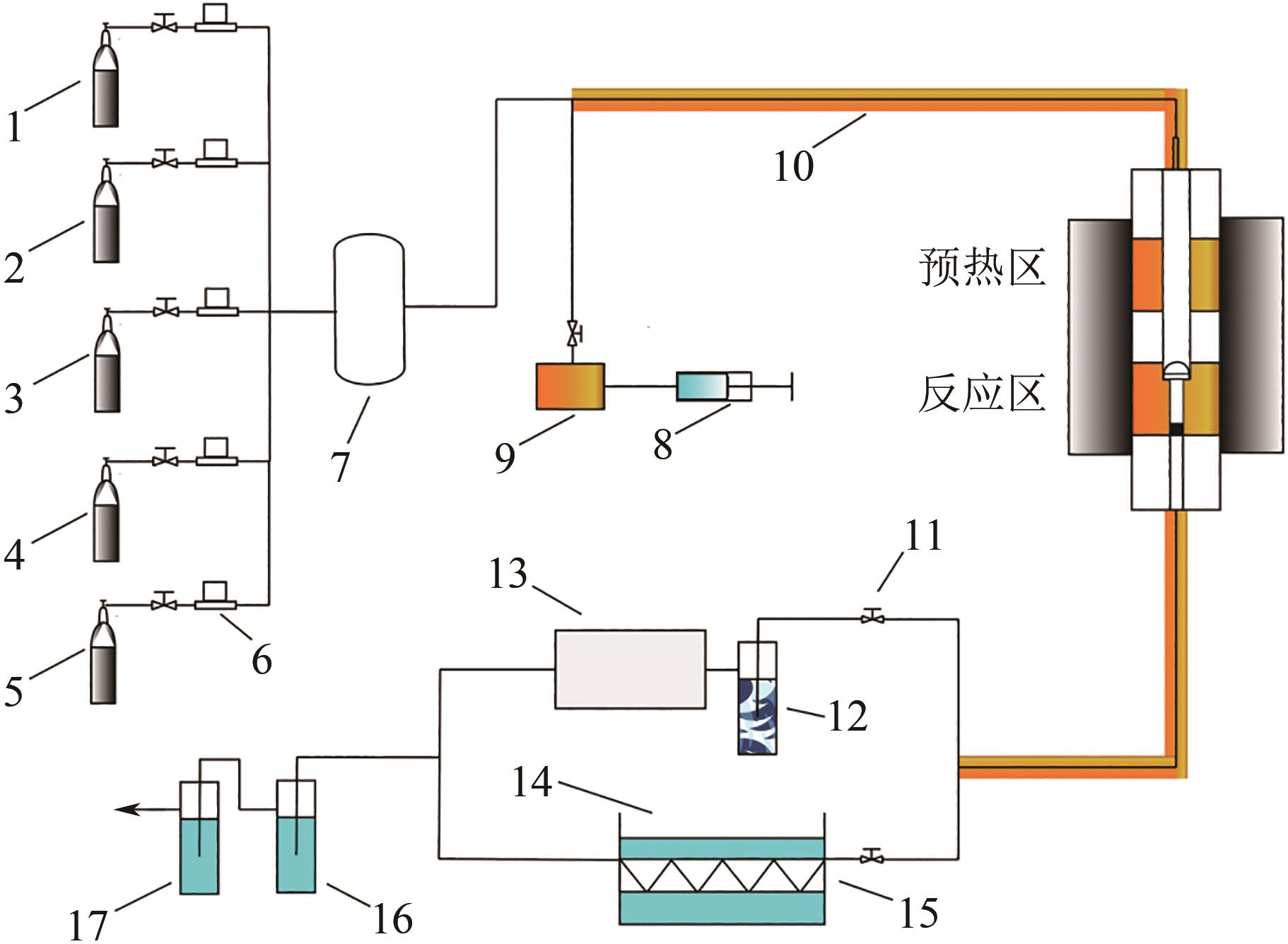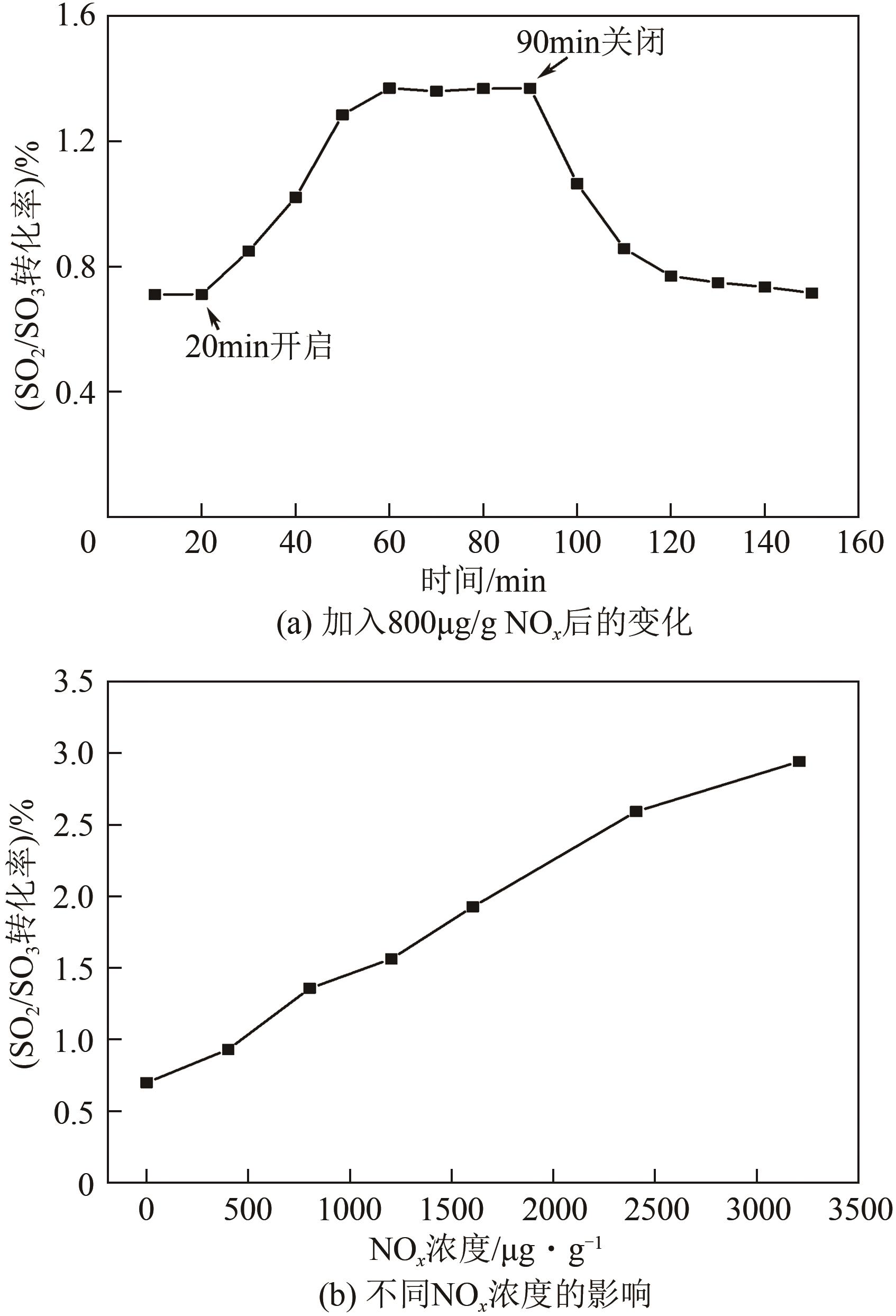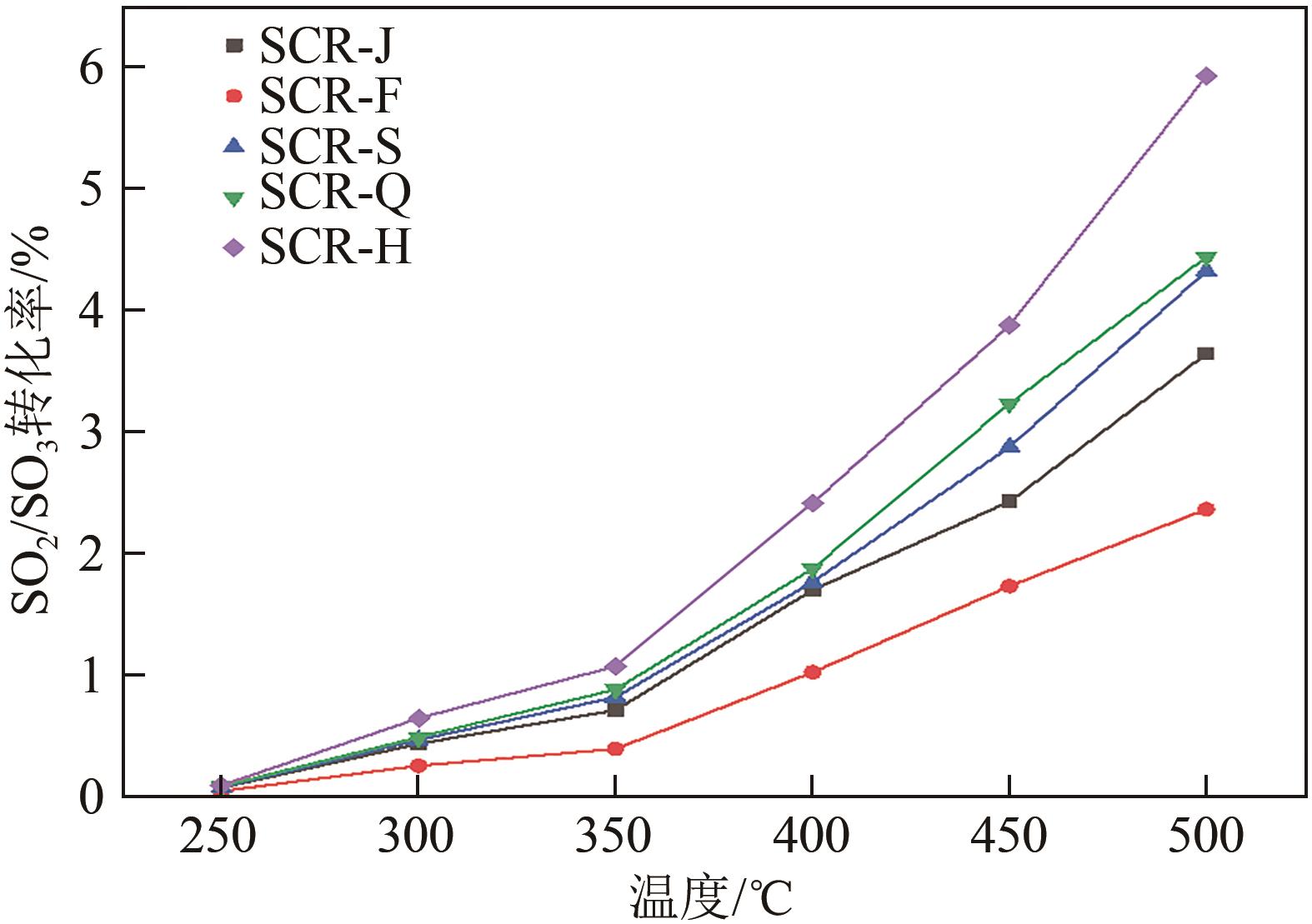| 1 |
LAI J-K, WACHS I E. A perspective on the selective catalytic reduction (SCR) of NO with NH3 by supported V2O5-WO3/TiO2 catalysts[J]. ACS Catalysis, 2018, 8(7): 6537-6551.
|
| 2 |
WANG Ben, SONG Zijian, SUN Lushi. A review: Comparison of multi-air-pollutant removal by advanced oxidation processes—Industrial implementation for catalytic oxidation processes[J]. Chemical Engineering Journal, 2021, 409:128136.
|
| 3 |
付金艳, 王振峰, 白心蕊, 等. γ-Al2O3酸性修饰稀土尾矿NH3-SCR脱硝性能[J]. 中国环境科学, 2020, 40(9): 3741-3747.
|
|
FU Jinyan, WANG Zhenfeng, BAI Xinrui, et al. Denitration performance of NH3-SCR from γ-Al2O3 acid modified rare earth tailings[J]. China Environmental Science, 2020, 40(9):3741-3747.
|
| 4 |
GUO Kai, JI Jiawei, SONG Wang, et al. Conquering ammonium bisulfate poison over low-temperature NH3-SCR catalysts: A critical review[J]. Applied Catalysis B: Environmental, 2021, 297: 120388.
|
| 5 |
ZHENG Chenghang, WANG Yifan, LIU Yong, et al. Formation, transformation, measurement, and control of SO3 in coal-fired power plants[J]. Fuel, 2019, 241: 327-346.
|
| 6 |
SARBASSOV Yerbol, DUAN Lunbo, MANOVIC Vasilijie, et al. Sulfur trioxide formation/emissions in coal-fired air- and oxy-fuel combustion processes: A review[J]. Greenhouse Gases:Science and Technology, 2018, 8(3): 402-428.
|
| 7 |
尹子骏, 苏胜, 王中辉, 等. 燃煤烟气中SO3与NH4HSO4生成特性及其控制方法研究进展[J]. 化工进展, 2021, 40(4): 2328-2337.
|
|
YIN Zijun, SU Sheng, WANG Zhonghui, et al. Research progress on the characteristics and control methods of SO3 and NH4HSO4 formation in coal-fired flue gas[J]. Chemical Industry and Engineering Progress, 2021, 40(4): 2328-2337.
|
| 8 |
CHAI Yanxiao, ZHANG Guizhen, HE Hong, et al. Theoretical study of the catalytic activity and anti-SO2 poisoning of a MoO3/V2O5 selective catalytic reduction catalyst[J]. ACS Omega, 2020, 5(42): 26978-26985.
|
| 9 |
李欣怡, 潘丹萍, 胡斌, 等. 燃煤烟气中SO3迁移转化特性及其控制的研究现状及展望[J]. 化工进展, 2018, 37(12): 4887-4896.
|
|
LI Xinyi, PAN Danping, HU Bin, et al. Research status and prospects of migration, transformation and control of SO3 from coal-fired flue gas[J]. Chemical Industry and Engineering Progress, 2018, 37(12): 4887-4896.
|
| 10 |
HUANG Rujin, ZHANG Yanlin, BOZZETTI Carlo, et al. High secondary aerosol contribution to particulate pollution during haze events in China[J]. Nature, 2014, 514(7521): 218-222.
|
| 11 |
王志超, 陈阳, 杨复沫, 等. 北京市远郊冬季铵盐颗粒物的单颗粒质谱研究[J]. 中国环境科学, 2018, 38(6): 2012-2021.
|
|
WANG Zhichao, CHEN Yang, YANG Fumo, et al. Single-particle characterization of ammonium-containing particles during wintertime in suburb of Beijing[J]. China Environmental Science, 2018,38(6):2012-2021.
|
| 12 |
刘毅. 燃煤烟气中SO3气相生成的实验与反应动力学研究[J]. 锅炉技术, 2019, 50(6): 74-77.
|
|
LIU Yi. Experimental and reaction kinetics studies of SO3 homogeneous formation in coal-fired flue gas[J]. Boiler Technology, 2019, 50(6):74-77.
|
| 13 |
ZHANG Jie, LI Xiangcheng, CHEN Pingan, et al. Research status and prospect on vanadium-based catalysts for NH₃-SCR denitration[J]. Materials, 2018, 11(9): 1632.
|
| 14 |
张道军, 马子然, 孙琦, 等. 硫酸氢铵在钒基选择性催化还原催化剂表面的生成、作用及防治[J]. 化工进展, 2018, 37(7): 2635-2643.
|
|
ZHANG Daojun, MA Ziran, SUN Qi, et al. Formation mechanism, effects and prevention of NH4HSO4 formed on the surface of V2O5 based catalysts[J]. Chemical Industry and Engineering Progress, 2018, 37(7): 2635-2643.
|
| 15 |
LI Yuran, XIONG Jin, LIN Yuting, et al. Distribution of SO2 oxidation products in the SCR of NO over V2O5/TiO2 catalysts at different temperatures[J]. Industrial & Engineering Chemistry Research, 2020, 59(11): 5177-5185.
|
| 16 |
LU Jianyi, ZHOU Zhiyong, ZHANG Hanzhi, et al. Influenced factors study and evaluation for SO2/SO3 conversion rate in SCR process[J]. Fuel, 2019, 245: 528-533.
|
| 17 |
XIONG Jin, LI Yuran, LIN Yuting, et al. Formation of sulfur trioxide during the SCR of NO with NH3 over a V2O5/TiO2 catalyst[J]. RSC Advances, 2019, 9(67): 38952-38961.
|
| 18 |
QING Mengxia, LEI Siyuan, KONG Fanhai, et al. Analysis of ammonium bisulfate/sulfate generation and deposition characteristics as the by-product of SCR in coal-fired flue gas[J]. Fuel, 2022, 313: 122790.
|
| 19 |
SHI Yajuan, SHU Hang, ZHANG Yuhua, et al. Formation and decomposition of NH4HSO4 during selective catalytic reduction of NO with NH3 over V2O5-WO3/TiO2 catalysts[J]. Fuel Processing Technology, 2016, 150: 141-147.
|
| 20 |
MAZIDI Mohammad, BEHBAHANI Reza Mosayebi, FAZELI Ali. Ce promoted V2O5 catalyst in oxidation of SO2 reaction[J]. Applied Catalysis B: Environmental, 2017, 209: 190-202.
|
| 21 |
CHOO Soo Tae, Sung Dae YIM, In-Sik NAM, et al. Effect of promoters including WO3 and BaO on the activity and durability of V2O5/sulfated TiO2 catalyst for NO reduction by NH3 [J]. Applied Catalysis B: Environmental, 2003, 44(3): 237-252.
|
| 22 |
FANG Zhitao, LIN Tao, XU Haidi, et al. Novel promoting effects of cerium on the activities of NO x reduction by NH3 over TiO2-SiO2-WO3 monolith catalysts[J]. Journal of Rare Earths, 2014, 32(10): 952-959.
|
| 23 |
KOBAYASHI Motonobu, KUMA Ryoji, MASAKI Sinyuki, et al. TiO2-SiO2 and V2O5/TiO2-SiO2 catalyst: Physico-chemical characteristics and catalytic behavior in selective catalytic reduction of NO by NH3 [J]. Applied Catalysis B: Environmental, 2005, 60(3/4): 173-179.
|
| 24 |
ZUO Wujun, ZHANG Xiaoyu, LI Yuzhong, et al. Evaluation of the controlled condensation method for flue gas SO3/H2SO4 measurement[J]. Fuel Processing Technology, 2020, 206: 106461.
|
| 25 |
LIU Fudong, HE Hong, ZHANG Changbin, et al. Mechanism of the selective catalytic reduction of NO x with NH3 over environmental-friendly iron titanate catalyst[J]. Catalysis Today, 2011, 175(1): 18-25.
|
| 26 |
杨加强, 梅毅, 王驰, 等. 湿法烟气脱硝技术现状及发展[J]. 化工进展, 2017, 36(2): 695-704.
|
|
YANG Jiaqiang, MEI Yi, WANG Chi, et al. Current status and trends on wet flue gas denitration technology[J]. Chemical Industry and Engineering Progress, 2017, 36(2): 695-704.
|
| 27 |
HUANG Li, ZENG Yiqing, GAO Yibo, et al. Promotional effect of phosphorus addition on improving the SO2 resistance of V2O5-MoO3/TiO2 catalyst for NH3-SCR of NO[J]. Journal of Physics and Chemistry of Solids, 2022, 163: 110566.
|
| 28 |
MOULDER John F, STICKLE William F, SOBOL Peter E, et al. Handbook of X-ray photoelectron spectroscopy[M]. Minnesota: Perkin-Elmer Corporation, 1992.
|
 ), 黄亚继1(
), 黄亚继1( ), 程好强1, 王圣2, 朱志成1, 李金壘1, 丁雪宇1, 李雨欣1, 魏泽坤1, 张荣初3
), 程好强1, 王圣2, 朱志成1, 李金壘1, 丁雪宇1, 李雨欣1, 魏泽坤1, 张荣初3
 ), HUANG Yaji1(
), HUANG Yaji1( ), CHENG Haoqiang1, WANG Sheng2, ZHU Zhicheng1, LI Jinlei1, DING Xueyu1, LI Yuxin1, WEI Zekun1, ZHANG Rongchu3
), CHENG Haoqiang1, WANG Sheng2, ZHU Zhicheng1, LI Jinlei1, DING Xueyu1, LI Yuxin1, WEI Zekun1, ZHANG Rongchu3













 烷污染研究进展
烷污染研究进展